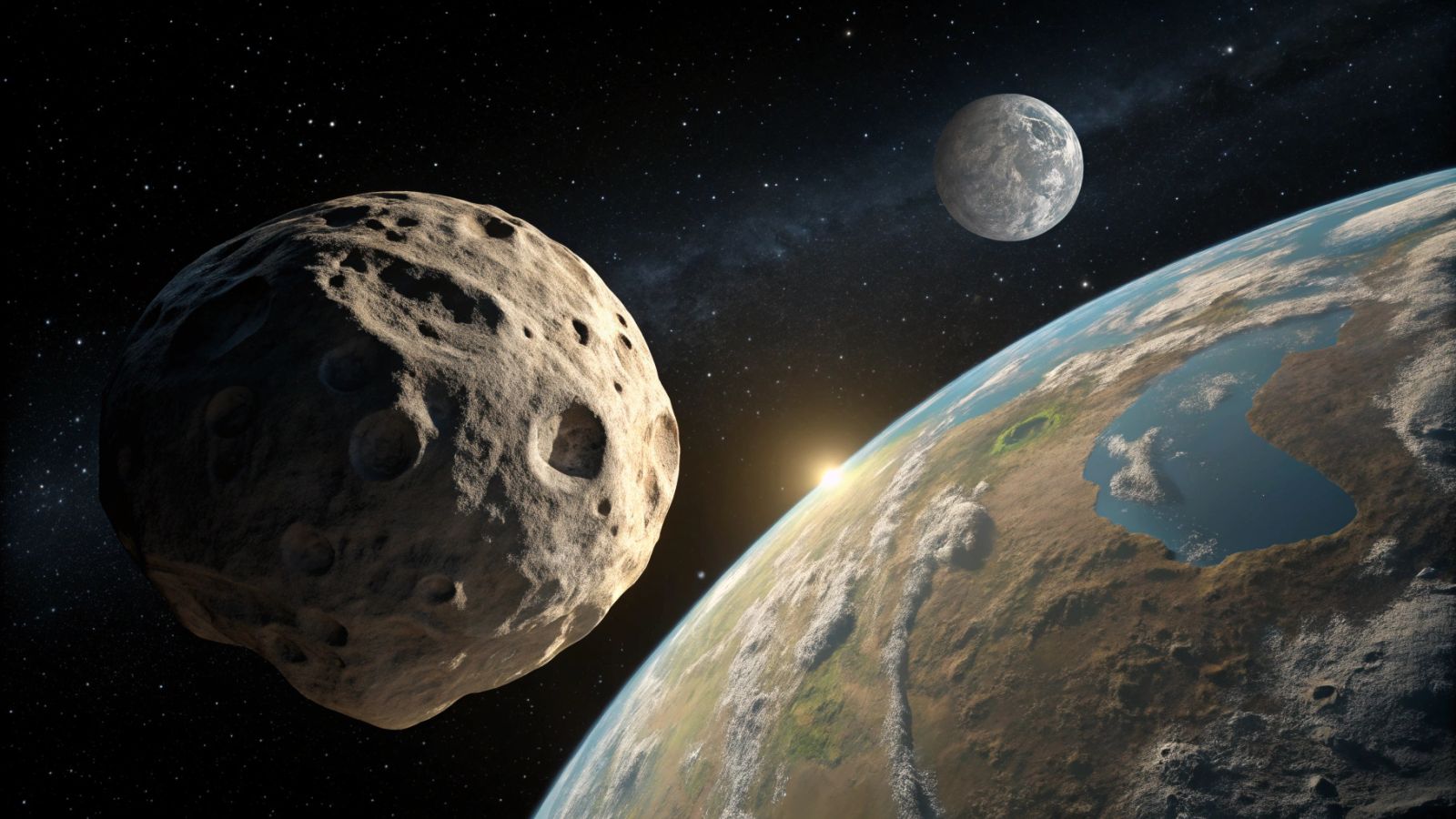🌑 A Second Moon Orbiting Earth?
Published by Cédric,
Article Author: Cédric DEPOND
Source: Research Notes of the American Astronomical Society
Other Languages: FR, DE, ES, PT
Article Author: Cédric DEPOND
Source: Research Notes of the American Astronomical Society
Other Languages: FR, DE, ES, PT
Follow us on Google News (click on ☆)
The identification of this rocky body was made possible by observations from the Pan-STARRS1 telescope, located in Hawaii. The collected orbital data immediately caught the attention of the scientific community due to their peculiarity. Preliminary calculations indicate that this asteroid has been accompanying Earth in its solar revolution for several decades, forming what specialists call a quasi-satellite.

Orbital Characteristics of 2025 PN7
Asteroid 2025 PN7 exhibits a heliocentric orbit synchronized with Earth's, a phenomenon described as a 1:1 resonance. This particular configuration gives it the appearance, from our terrestrial perspective, of circling our planet. In reality, the object follows its own trajectory around the Sun, maintained in a dynamic balance by the combined gravitational influences of our star and Earth. This orbital dance represents a valuable case study for planetary scientists.
The modest dimensions of the asteroid, estimated at about sixty-two feet (19 meters) in diameter, partly explain why it remained undetected for so long. Its apparent magnitude of 26 places it well below the limits of visibility to the naked eye, requiring the use of powerful observation instruments. With favorable observation windows from Earth being rare and brief, its detection constitutes a significant technical achievement. These physical parameters clearly distinguish it from other documented quasi-satellites.
The orbital stability of 2025 PN7 appears relatively fragile compared to that of other similar bodies. Gravitational perturbations induced by neighboring planets, particularly Venus and Mars, gradually alter its orbital parameters. Current projections suggest that this quasi-satellite relationship could persist for several more decades before the object moves away permanently. This limited timeframe reinforces the scientific interest in its immediate observation.
Scientific Implications and Future Perspectives
Confirmation of the quasi-satellite status would make 2025 PN7 the eighth object of this type recorded in Earth's environment. Researchers from the Complutense University of Madrid describe it as the smallest and least stable among the quasi-satellites identified to date. This relative instability precisely offers a unique opportunity to study orbital transitions in the inner solar system. Each documented specimen enriches our understanding of the dynamic processes at work.
The late detection of this object shows the limitations of our space surveillance systems. Despite technological progress, modest-sized bodies can still escape our vigilance for extended periods. The announcement published in Research Notes of the American Astronomical Society emphasizes this reality. The commissioning of facilities like the Vera C. Rubin Observatory should significantly improve our detection capabilities.
The study of quasi-satellites presents an interest that goes beyond mere astronomical curiosity. These objects could, in time, become preferred targets for space exploration missions due to their orbital accessibility. Their composition could provide information about the formation of the solar system and the distribution of primitive materials. Monitoring their trajectories also helps refine our predictive models concerning near-Earth objects.